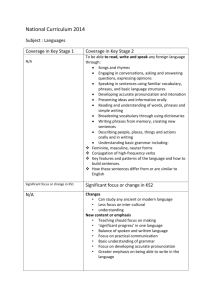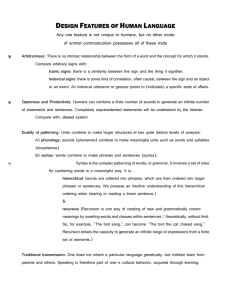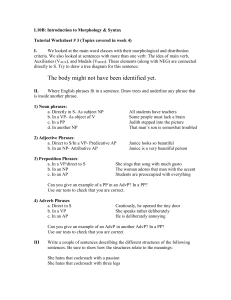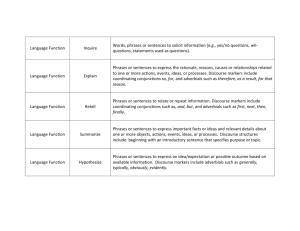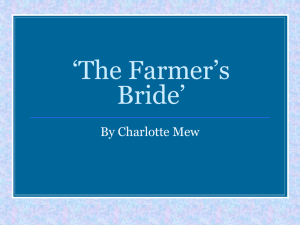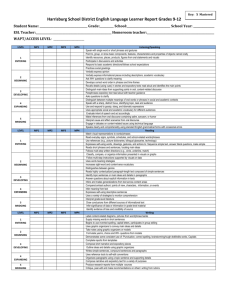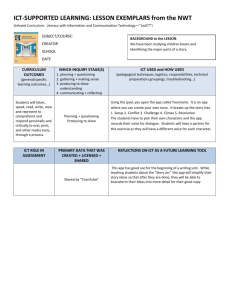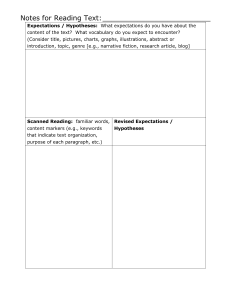Shared Reading Overview - Index of /tech/education
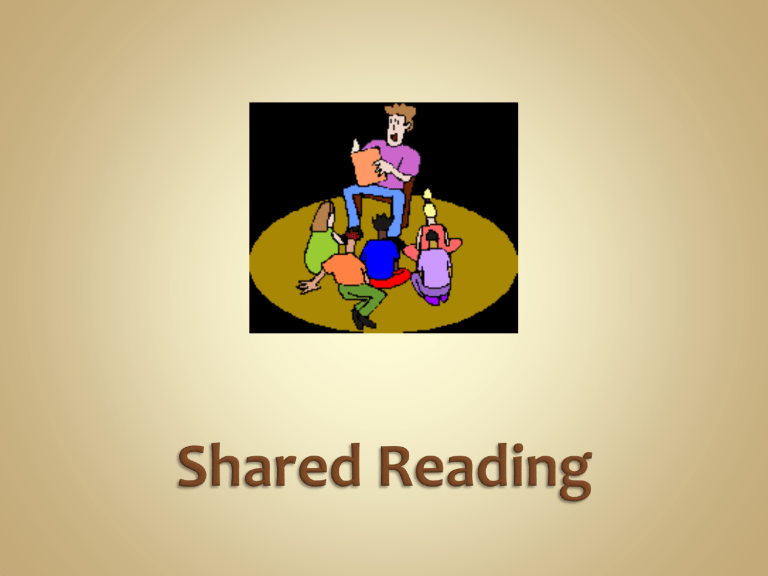
Grouping Options : One-on-One, small group, large group
Heterogeneous —mixed levels
Materials : Picture Books, Big Books
Major focus areas :
Reading for enjoyment,
Modeling concepts about print,
Reinforcing language conventions,
Reinforcing word patterns, sentence patterns, and story patterns.
Repeated reading of a text
Children are active participants in the reading.
The shared reading experience helps students see reading as pleasurable and meaningful (Butler & Turbill, 1987).
It helps students develop concepts about reading and language:
including about story and narrative,
rhythm and rhyme,
the relationship between print and speech,
conventions such as punctuation, and
it helps them with specific letter–sound correspondences and word recognition.
The use of big books also gives students opportunities to learn about language together as a classroom community
(Davidson, 1989).
Big books that are most useful for shared reading are those where:
the amount and location of text on a page is controlled, and
where the language is repetitive and/or otherwise predictable.
Such books encourage:
students’ participation,
facilitate their learning about books, stories and story structures,
facilitate their knowledge of language patterns and structures, and
scaffold their later attempts to read the story independently.
Rhyme and rhythm —the sentences have a strong rhythm, or beat, and rhyme may be used at the end of sentences.
Seuss, Dr. (1963). Hop on Pop. New York: Random House.
Guarino, Deborah (1989). Is Your Mama a Llama?
New York, NY: Scholastic, Inc.
Repetitive sentences —these books have phrases or sentences that will repeat throughout the book.
Carle, Eric. From Head to Toe. New York, NY: Philomel.
Martin, Bill, Jr. (1983). B rown, Bear, Brown Bear, What Do You See?
New York, NY:
Holt, Rinehart, and Winston.
Cumulative pattern —phrases or sentences are repeated with each page and new phrases are added as the story unfolds.
Galdone, P. (1979). The Little Red Hen. New York, NY: Clarion.
Simms, T. (2002). The House that Jack Built. New York, NY: Putnam.
Sequential pattern —these books use colors, numbers, alphabet, or other patterns to move through the book.
Numeroff, L. J. (1985). If You Give a Mouse a Cookie. New York, NY:
HarperCollins.
Wood, A. (1984). The Napping House. San Diego, CA: HarperCollins.
Begin by introducing the book.
Discuss the author and illustrator.
Give a brief overview of what the book will be about.
When reading the book, make sure that all children can easily see the book (Ruddell, 1999).
As you read the book, track the print using a pointer or your finger, so that students can follow and in order to reinforce such concepts as left-to-right and top-to-bottom directionality and the one-to-one correspondence between the spoken word and the written word.
Where relevant, make and ask for predictions about the story (e.g., by saying “I’ll bet this is a story about…, I wonder what will happen next…”).
Explore key vocabulary.
Invite children to repeat key words or phrases of the story and thereby to join in the reading.
Usually, you will share a book at least a few times, with the students increasingly being able to join in.
Remember each time to track the print as you read. After one or two readings, encourage the children to join in with you by echoing what you read.
On subsequent rereadings of the book, cover up word or word parts with sticky notes, then focus students’ attention on:
word structure (letter-sounds, onset-rime patterns, inflections, syllables), and
language patterns (repetition, rhyme, unique words).
Write the story, or a portion of the story, on sentence strips so that students can retell or build the story in a pocket chart (McCracken
& McCracken, 1995).
Have the students write their own big book pages that extend the story, showing what would happen next.
Encourage the students to act out the story as a creative drama activity. You might assign each student a character and have the students wear index cards with their characters’ names (Fisher & Medvic, 2000).
Have the students dramatize the story but with puppets as the characters (Fisher &
Medvic, 2000).
